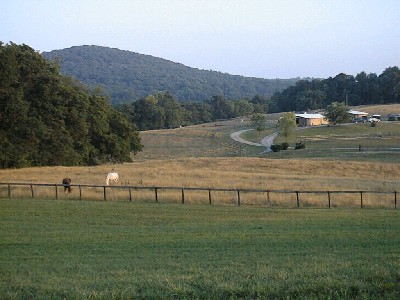

Heirloom Tomatoes
What are Heirlooms Tomatoes? Heirlooms are old, pure varieties known for their unique colors and wonderful flavor. More than hundreds of these family-heirloom varieties exist, seeds passed down and treasured for generations. Hybrid tomatoes were developed by industry in the fifties for red color and thick skin for transport to grocery stores. You won't find tomatoes this good in the grocery store, and you won't find these seedlings at a megastore garden shop. Do you grow a garden at home? Treat yourself to the rich flavor and unique colors of heirloom tomatoes. There is no comparison to most standard hybrid varieties, even homegrown, to these delicious varieties that have been cultivated for over fifty years, sometimes 150 years. Another bonus is that these varieties are indeterminate. That means they set their fruit continuously, for a longer harvest than determinate plants. Determinate plants set their fruit all at once, so they will ripen about all at once. If you are growing especially to can your tomatoes, and want to harvest them all in a concentrated few weeks, a hybrid determinate variety might be a good choice for you. That would match the needs of big big farm businesses that pull up whole plants on a combine machine to harvest all the fruit at once. Way different needs than the average homegrower, but we've been marketed the same varieties. Time to re-educate and take back the old varieties! For more about heirlooms and a list of hundreds, go to www.tomatofest.com.
(NOTE SOURCE)
What is the difference between "determinate" and "indeterminate" tomatoes?
Determinate varieties of tomatoes, also called "bush" tomatoes, are varieties that are bred to grow to a compact height (approx. 4 feet).
They stop growing when fruit sets on the terminal or top bud, ripen all their crop at or near the same time (usually over a 2 week period), and then die.
They may require a limited amount of caging and/or staking for support, should NOT be pruned or "suckered" as it severely reduces the crop, and will perform relatively well in a container (minimum size of 5-6 gallon). Examples are: Rutgers, Roma, Celebrity (called a semi-determinate by some), and Marglobe.
Indeterminate varieties of tomatoes are also called "vining" tomatoes. They will grow and produce fruit until killed by frost and can reach heights of up to 10 feet although 6 feet is considered the norm. They will bloom, set new fruit and ripen fruit all at the same time throughout the growing season.
They require substantial caging and/or staking for support and pruning and the removal of suckers is practiced by many but is not mandatory. The need for it and advisability of doing it varies from region to region. Experiment and see which works best for you. Because of the need for substantial support and the size of the plants, indeterminate varieties are not usually recommended as container plants. Examples are: Big Boy, Beef Master, most "cherry" types, Early Girl, most heirloom varieties, etc.
~~~~~~~~Planting timing and tips~~~~~~~~ When to plant? Plan to plant your tomatoes between May 5-20. The old wisdom of planting tomatoes and flowers Mother's Day weekend is a good one. Some people plant early (with some extra risk of frost damage) and some wait until early June. We have risk of a night frost through May, so watch the forecast if you plant early. You can even rig up a sheet or row cover over some t-posts, chairs or tomato cages for a cold night! How to plant? Dig a hole deep enough to bury the lowest leaves. You can even bury a couple sets of leaves if the stem is that long. Tomatoes like it that way. They are really vines and will grow quite tall. Put the compost from your pot, and extra if you have it, into the hole too, or pour it around the plant. Pour a couple cups of water around the stem area, to melt the soil around the plant. Sometimes the leaves look sad for a couple days but then they perk up. In a week the leaves will deepen green and be happy. Put a sturdy tomato cage over each plant, right away or within a week before the plants get too big. Transition time-- Your plants would benefit from a couple days of protection, if you can offer it. You can keep them in the pots on the sunny side of the porch for a couple days, bringing them in on colder nights. Next to your house, they will have some wind protection.